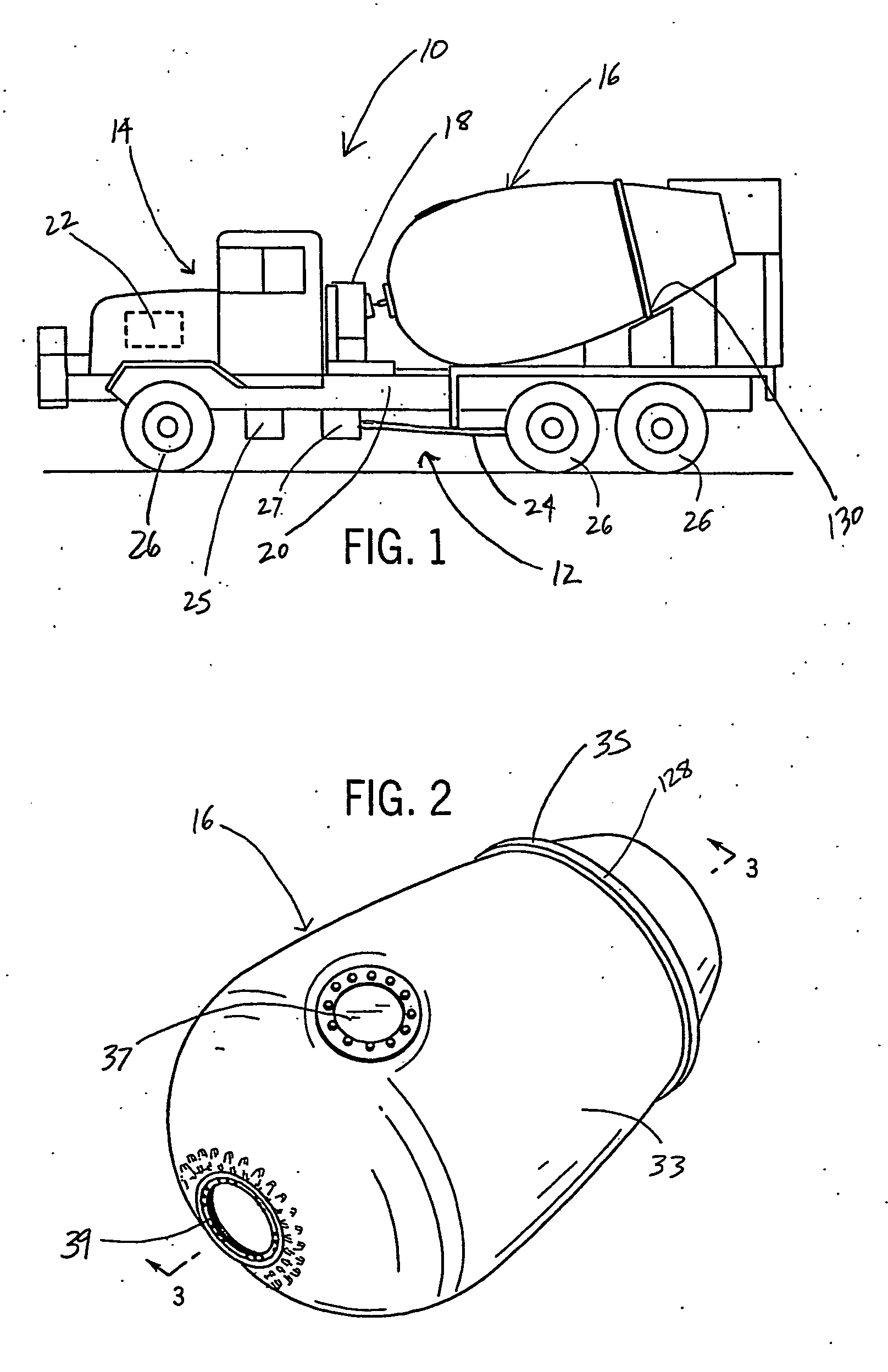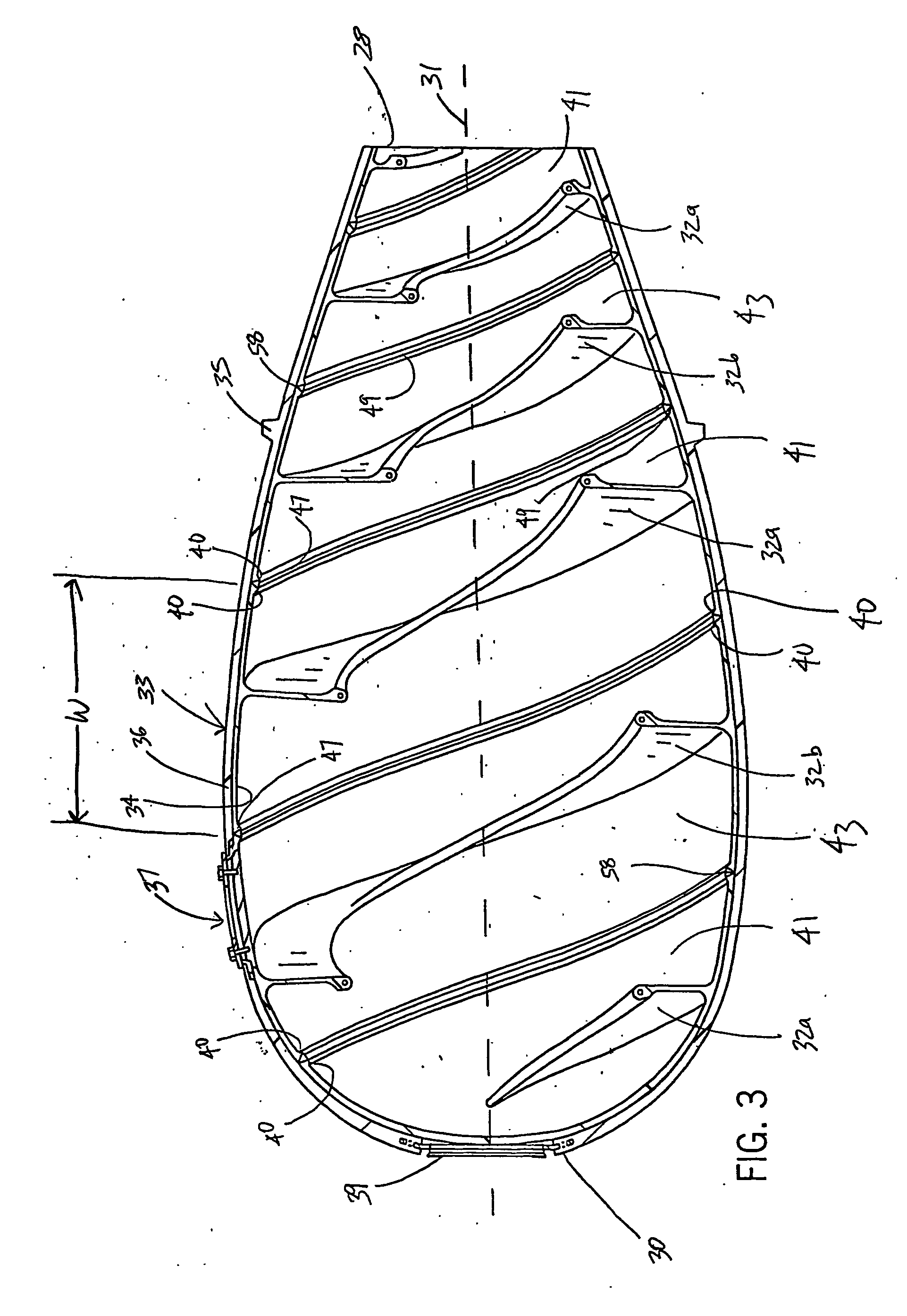Mixing drum hatch
a technology for mixing drums and hatches, which is applied in the direction of clay preparation equipment, transportation and packaging, chemical equipment and processes, etc., can solve the problems of relatively high cost to construct a metal drum, metal drum internal surfaces tend to wear quickly, and metal drum construction is a relatively labor-intensive activity
- Summary
- Abstract
- Description
- Claims
- Application Information
AI Technical Summary
Benefits of technology
Problems solved by technology
Method used
Image
Examples
Embodiment Construction
[0027]FIG. 1 is an illustration of a concrete mixing truck 10, which includes a chassis 12, a cab region 14, a mixing drum 16, and a mixing drum drivetrain 18. Chassis 12 includes a frame 20, a power source 22, a drivetrain 24, and wheels 26. Frame 20 provides mixing truck 10 with the structural support and rigidity needed to carry heavy loads of concrete. Power source 22 is coupled to frame 20 and generally comprises a source of rotational mechanical energy which is derived from a stored energy source. Examples include, but are not limited to, an internal combustion gas-powered engine, a diesel engine, turbines, fuel cell driven motors, an electric motor or any other type of motor capable of providing mechanical energy.
[0028]For purposes of this disclosure, the term “coupled” means the joining of two members directly or indirectly to one another. Such joining may be stationary in nature or moveable in nature. Such joining may be achieved with the two members or the two members and ...
PUM
| Property | Measurement | Unit |
|---|---|---|
| Power | aaaaa | aaaaa |
| Elastomeric | aaaaa | aaaaa |
Abstract
Description
Claims
Application Information
 Login to View More
Login to View More - R&D
- Intellectual Property
- Life Sciences
- Materials
- Tech Scout
- Unparalleled Data Quality
- Higher Quality Content
- 60% Fewer Hallucinations
Browse by: Latest US Patents, China's latest patents, Technical Efficacy Thesaurus, Application Domain, Technology Topic, Popular Technical Reports.
© 2025 PatSnap. All rights reserved.Legal|Privacy policy|Modern Slavery Act Transparency Statement|Sitemap|About US| Contact US: help@patsnap.com



